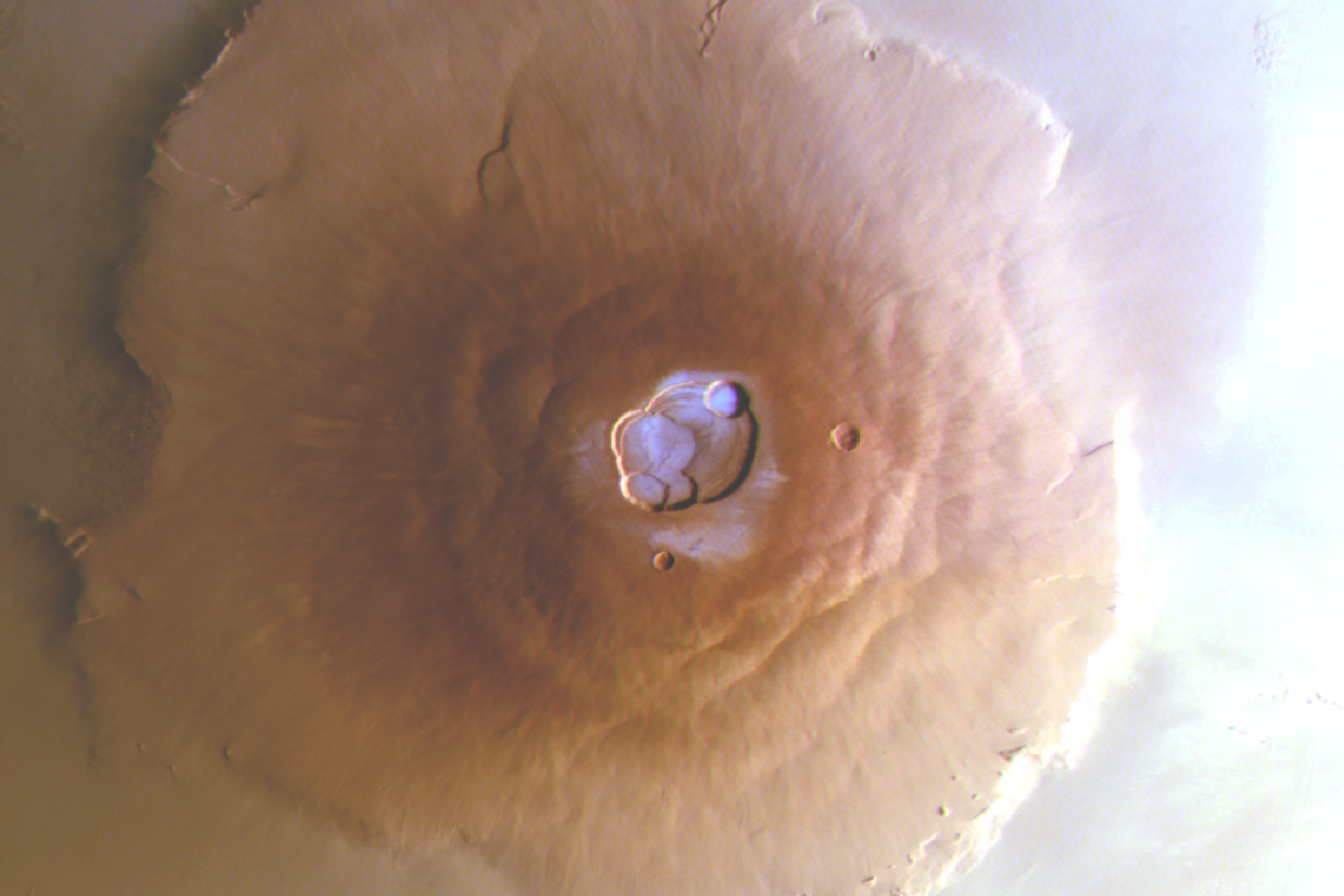Morning frost detected on volcanoes near Mars’s equator
The finding indicates that water ice is far more abundant across the planet than previously thought.

Morning frost has been spotted on volcanoes near Mars’s equator for the first time, a part of the planet where it was thought impossible for water frost to exist.
The “astonishing” discovery confirms that ice is not only confined to the red planet’s poles, and indicates that water ice is far more abundant across the planet than previously realised.
The frost sits atop the Tharsis volcanoes – the tallest volcanoes not only on Mars, but across the Solar System.
We thought it was impossible for frost to form around Mars’s equator
It was first seen by the European Space Agency’s (Esa) ExoMars Trace Gas Orbiter (TGO), and later by both another instrument aboard TGO and Esa’s Mars Express.
Lead author Adomas Valantinas, who made the discovery as a PhD student at University of Bern, Switzerland, and is now a postdoctoral researcher at Brown University, USA, said: “We thought it was impossible for frost to form around Mars’s equator, as the mix of sunshine and thin atmosphere keeps temperatures relatively high at both surface and mountaintop – unlike what we see on Earth, where you might expect to see frosty peaks.”
Dr Minjae Kim, research fellow, Department of Physics, University of Warwick, told the PA news agency: “Esa’s ExoMars and Mars Express missions have now made an astonishing detection – spotting water frost for the first time near the planet’s equator, a region where its existence was previously thought impossible.
“This finding confirms that ice is not solely confined to the Martian poles.
“It indicates that water ice had been, and still is, far more abundant across the planet than previously realised.
He added that the ice deposits must have formed during Mars’s ancient past when climatic conditions were “starkly different”, and that the “massive discoveries fundamentally reshape our understanding of Mars’s climatic history”.
Dr Kim said the findings represent a major breakthrough while also raising new questions.
Finding water on the surface of Mars is always exciting, both for scientific interest and for its implications for human and robotic exploration
One question relates to how long ago these equatorial ice deposits accumulated, and what the climate was like on Mars during that earlier, ice-rich era.
“This stunning new evidence of near-equatorial water ice on the red planet opens up avenues for reconstructing its evolution and environment during its earlier, wetter period,” said Dr Kim.
The newly discovered patches of frost are present for a few hours around sunrise before they evaporate in sunlight.
Despite being as thin as a human hair, they cover a vast area.
Esa suggests that the amount of frost represents about 150,000 tonnes of water swapping between surface and atmosphere each day during the cold seasons, the equivalent of roughly 60 Olympic swimming pools.
There are a number of possible reasons for why the frost had not been spotted until now.
These include the orbit needing to line up in the right position in order for the area to be observed in the early morning, and another is needing to know where and when to look for the frost.
Dr Valantinas said: “We happened to be looking for it near the equator for some other research, but didn’t expect to see it on Mars’s volcano tops.”
Colin Wilson, Esa project scientist for both ExoMars TGO and Mars Express, said: “Finding water on the surface of Mars is always exciting, both for scientific interest and for its implications for human and robotic exploration.”
The findings are published in Nature Geoscience.